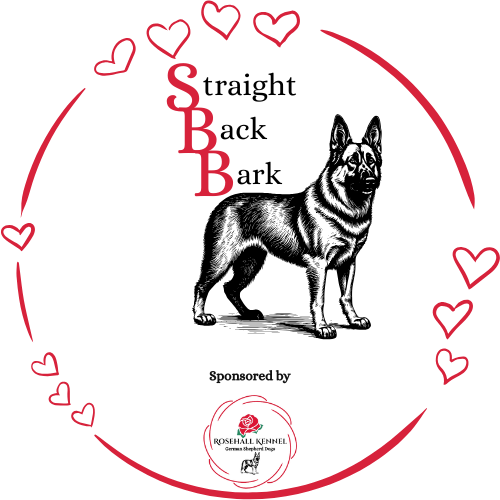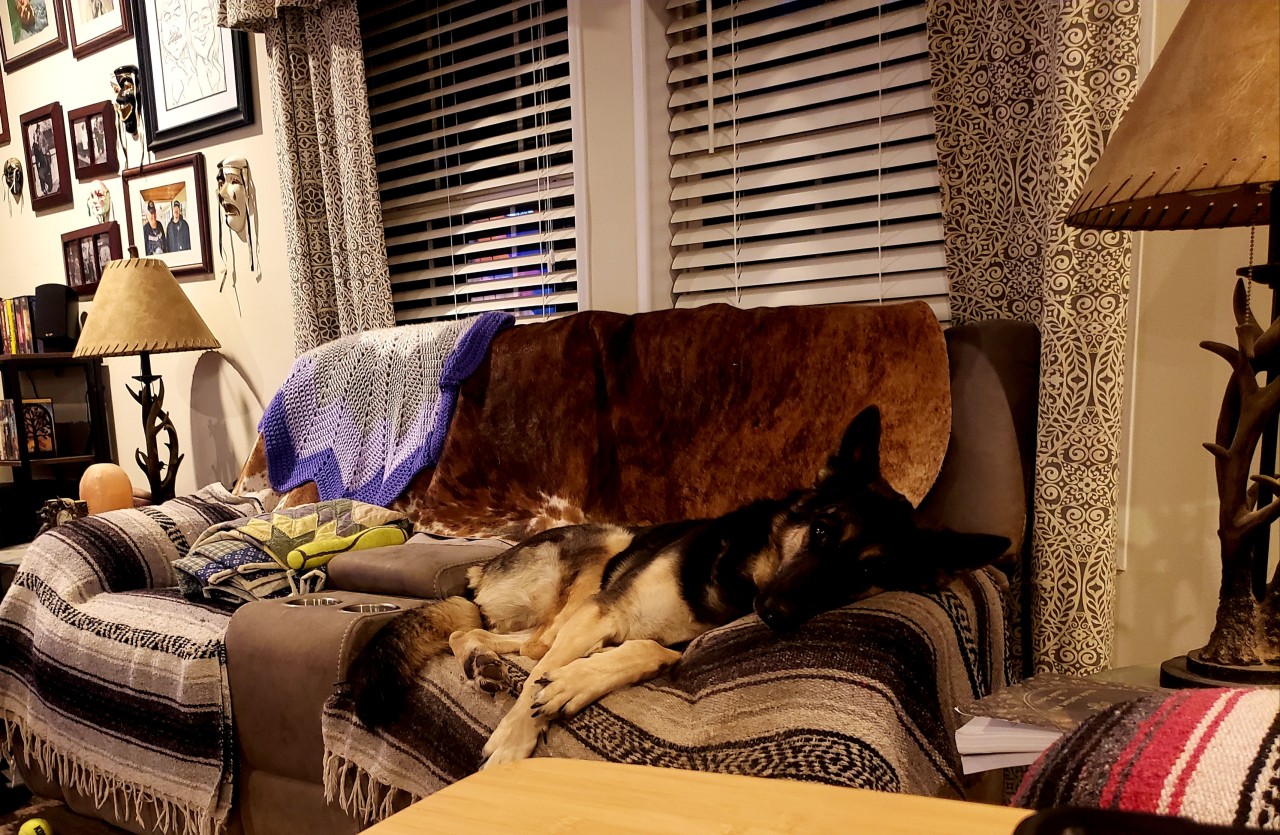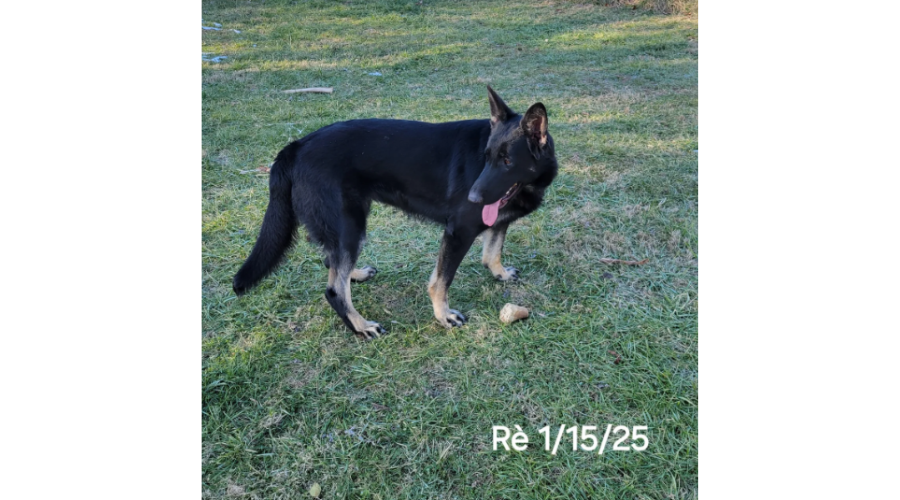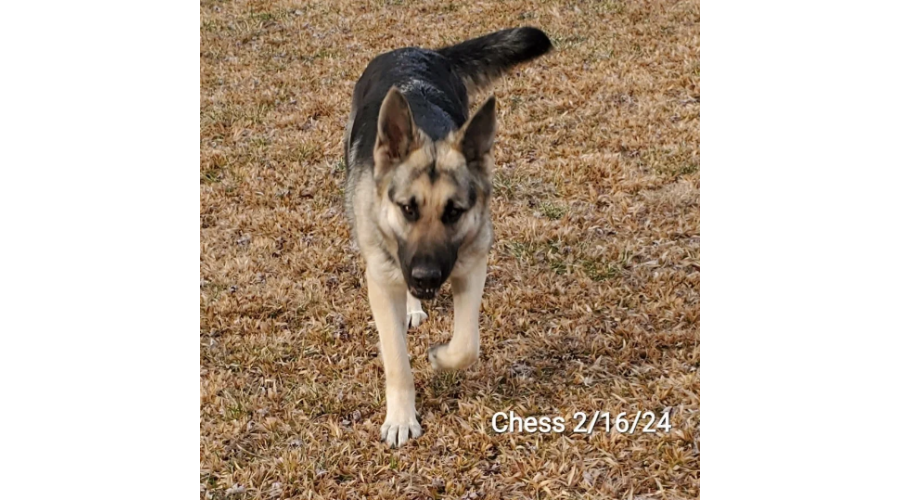German Shepherd dogs are a popular breed for their intelligence and versatility. They make great pets, service dogs, sporting dogs and working dogs. Depending on the breeding, the straight-back GSD can make a great pet (low to medium drive breedings) or an excellent working dog (medium to high drive breedings). The original German Shepherd, first bred by Max Emil Friedrich von Stephanitz, had a straight back. The breed was started with a German sheepdog named Hektor Linksrhein, renamed Horand von Grafrath after von Stephanitz purchased him for 200 gold marks. Along with his new name, Horand von Grafrath received a new breed name—the German Shepherd dog.
Straight-back German Shepherds bred with low to medium drives make excellent pets because of their temperament, physical attributes and practicality.
Practicality as Pets
We always recommend doing research before purchasing your first German Shepherd dog to ensure the breed is a good fit for your family. Some of the factors you should consider include:
Energy Levels and Exercise Needs
Experienced breeders can breed low, medium and high-drive dogs. In the best interest of the dog, ensure you can provide plenty of exercise, even for dogs with lower drive and energy levels. Shepherds are intelligent and get bored easily. They require a fenced yard large enough for them to run and plenty of walks.
Without the proper exercise, your shepherd may become destructive out of boredom. Additionally, not providing enough exercise can affect their health.
Family Dynamics
Most German Shepherd dogs integrate well into families and provide companionship and protection for family members of all ages. However, as with all breeds of dogs, they should be supervised when playing with young children, especially dogs with higher drives. They do not realize how big they are and can easily hurt a child without meaning to. All it takes is a rambunctious bump from a large dog to knock a child over.
Socialization and Training
If you want a well-adjusted German Shepherd, you must provide socialization and training early in the shepherd's life. However, socialization and training do not stop once your dog learns commands or seems to get along with other dogs and strangers. You must have time to work with your dog every day, even if it's just a "reminder" of the commands you took the time to teach it in its younger years.
With proper socialization and training, your German Shepherd dog can be very loving and protective, especially with children.
Physical Attributes of the Straight-Back German Shepherd Dog
The straight-back German Shepherd dog has more of a rectangular shape rather than a triangular shape. The sloped-back was bred mainly for show purposes. Show judges liked the look of the sloped-back's flying trot, and over the years, it became the breed standard. However, sloped-back GSDs were not bred to be working dogs, as their balance is not as good as a straight-back's balance. The sloped backs in these dogs can cause more endurance issues and health problems.
Otherwise, both types have about the same lifespan of nine to thirteen years and the same intelligence, exercise requirements and grooming needs. Height and weight can vary, as some breeders breed large straight-back shepherds that can range from 80 to over 120 pounds. Again, this depends on the genetics of the parent dogs.
Straight-back shepherds can also have a variety of coats. The AKC considers many of the variations of coat colors to be faults, though that does not matter for someone who is not going to show.
Coat Variations
The most common color variation is the standard black and tan. The dog sports a black saddle or cape with tan or brown legs and markings. Other coat variations include:
- Black and red.
- Solid black, caused by a recessive gene that must be inherited from both parent dogs.
- Solid white, which is a masking gene. The pup must inherit two copies of this gene. Solid white dogs can produce colored pups, as the genetic color can be anything. Note: The white Swiss or Berger blanc Swiss dogs are a sub-type of German Shepherd bred from purebred white GSDs.
- Sable, which can be gray, red, tan or black.
- Fawn or crème, sometimes called tan or red sables, which is more common in Belgian Malinois and more rare in German Shepherds.
- Blue, which is caused by a recessive dilution gene that causes saddle, mask, cape and other dark parts to have a faded or "dusty" appearance. It can also affect eye color, and some blue GSDs have blue eyes that gradually fade to amber or a paler brown than the normal GSD eye color.
- Liver is a recessive gene that causes the black parts of the GSD's coat to turn brown. It can also affect eye color. Some liver pups may have blue eyes that eventually change to amber and brown nose leather instead of black nose leather. The liver color can range from dark brown, similar to leather, to rust, red or even golden.
- Isabella is a rare coat color caused by a second dilution gene in a liver pup. The liver or chocolate color turns a deep blue. Coat colors can range from light silvery gray to a deep golden color.
- Seal coats happen when a solid-coat puppy inherits one sable gene from a parent. Some dogs can have a slight "bleed through" of the sable pattern. These pups are born with a solid coat. The pattern emerges gradually as the pup ages.
- Panda is a mutation that occurs spontaneously. It first happened to a purebred GSD female named Lewcinka's Franka von Phenom in 2000. It is the result of a mutation of the KIT gene, which causes a dog to have white markings on its face and coat. It can cause some dogs to have one or two blue eyes. The blue eyes do not show up until the pup is 8 weeks or older.
Temperament and Personality
The GSD is known for intelligence, trainability, confidence, fearlessness, loyalty and affection, all of which are sought-after traits for GSDs for family pets and those with a range of jobs, including show dogs and working dogs.
Intelligence and Trainability
Both the AKC and PetMD consider the German Shepherd dog to be the third smartest breed, with the border collie and poodle coming in at smartest and second smartest, respectively. Because of the breed's exceptional intelligence, trainability and versatility, many people prefer the breed for various reasons, whether it is for companionship, a service dog, search and rescue or sporting.
The GSD's instincts come from protecting flocks over hundreds of years. The skills required for protecting flocks include problem-solving and being adaptable. Because of this, the German Shepherd excels at demanding and stressful jobs, such as police work, military work and search and rescue.
Confidence and Fearlessness
A German Shepherd is confident and fearless but generally not aggressive. It will carefully watch and assess, as they are naturally aloof and often reserved with strangers. However, they are loyal to no end. Once a shepherd decides to trust you, you will see a side of their personality that feels like a reward.
As a family dog, they make excellent watchdogs and will often protect children over anyone else. GSDs are usually calm, assured, assertive, confident, powerful, intelligent and athletic. At home with its trusted family, it is calm, loving, quiet and can be spunky during playtime.
Loyalty and Affection
We touched on loyalty above because it's hard to have a loyal dog that doesn't trust. Once you earn a GSD's trust, you can count on loyalty in protecting its home and people and wanting to please its owners.
The German Shepherd dog can also be very affectionate—to the point that you can't even use the bathroom without those big brown eyes following your every move. Regardless of the drive your GSD has, you can bet that you will need to provide lots of affection, as this breed craves it but also returns it in spades.
Health Benefits
Research shows that straight-back German Shepherds are generally healthier than sloped-back German Shepherd dogs.
- Better Musculoskeletal Health: Studies have shown that straight-back German Shepherd dogs have fewer musculoskeletal issues, including hip and elbow dysplasia, due to better joint formation and less wear and tear on the hips and spine.
- Better Weight Distribution: Because of the more vertical force between the fore and hindlimbs, straight-back GSDs have better weight distribution, which causes less wear and tear on joints.
- Improved Gait Symmetry: Straight-back GSDs have less unilateral differences in joint movements, especially in hock and stifle flexion and hock adduction. Of course, this also minimizes the "flying trot" seen in show rings.
- Lower Risk of Osteoarthritis: In addition to improved gait symmetry, straight-back shepherds are at a lower risk of developing osteoarthritis at an earlier age.
- Reduced Risk of Hip Dysplasia: Because of the skeletal alignment, straight-back shepherds generally have a lower risk of hip dysplasia. Of course, genetics also plays a role in hip and elbow dysplasia.
- Higher Endurance Levels: For pets, some people may not have a preference for endurance levels. However, if you want a companion that can keep up with your active lifestyle, the straight-back shepherd typically has higher endurance levels.
- Better Mobility: Because of the more vertical posture of the straight-back shepherd, it has better mobility, which can contribute to better overall health.
Choosing a Straight-Back German Shepherd Dog
If you do not plan on conformation showing, and you want one of the best pets that shows loyalty and protects your family, consider a straight-back GSD puppy. As long as you properly socialize and train the puppy, you will have an excellent pet when you choose an old-fashioned German Shepherd puppy.







Comments